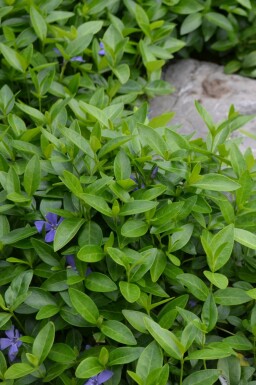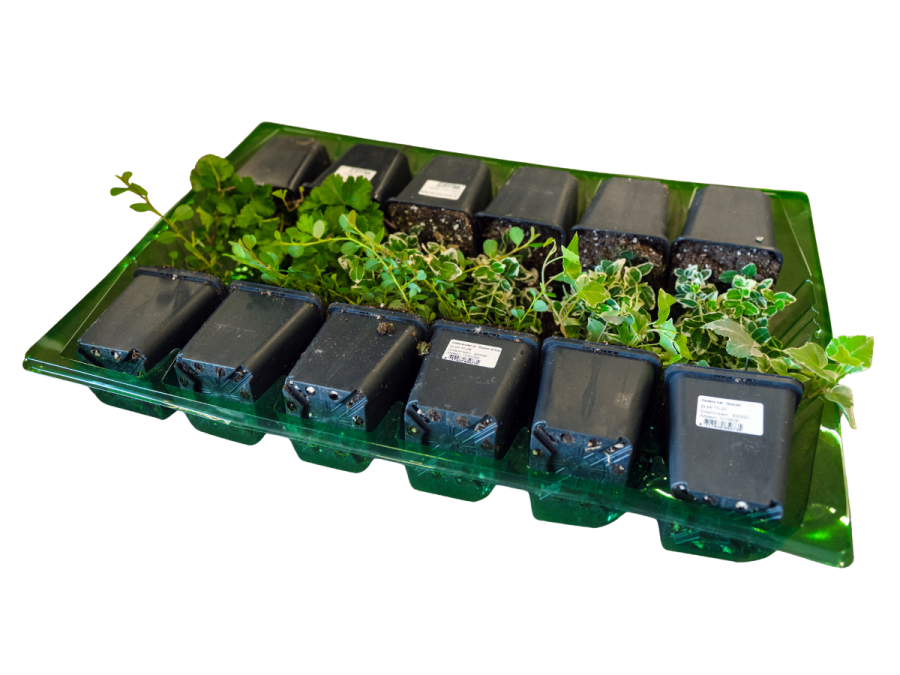Description
Vinca minor | Lesser periwinkle
The Vinca minor, commonly known as the lesser periwinkle or running myrtle, is a versatile and attractive evergreen groundcover, ideal for a variety of garden settings. With its charming blue flowers and lush green foliage, this species is a favorite for gardeners looking to create a tapestry of year-round color.
Native to Europe and the Caucasus region, Vinca minor thrives in a range of conditions and adds a touch of elegance to any landscape design.
Key Features
The Vinca or running myrtle offers several noteworthy features that make it a must-have for garden enthusiasts:
- A robust evergreen groundcover, it maintains its lush green foliage throughout all seasons, bringing life to your garden even in the coldest months.
- The lesser periwinkle flourishes in a variety of soil types, provided they are well-drained.
- Its stunning blue and purple flowers bloom prolifically from March through June, adding a splash of color to borders, group plantings, and slopes.
- The species exhibits a creeping growth habit that spreads widely, making it an excellent choice for sub-planting under taller plants or covering larger areas.
- It is a low-maintenance plant, with average water needs and a capacity to grow in full sun, partial shade, or shade.
Tips
- To encourage healthy growth and spread of Vinca minor, consider dividing the plant in spring or autumn. This will rejuvenate the plant and help maintain its vigor.
- When planting, space the individual plants sufficiently to allow for their creeping growth habit, ensuring they can establish themselves and cover the desired area effectively.
- Water the plants regularly, especially during dry periods, as the lesser periwinkle is not drought resistant and benefits from consistent moisture levels.


































